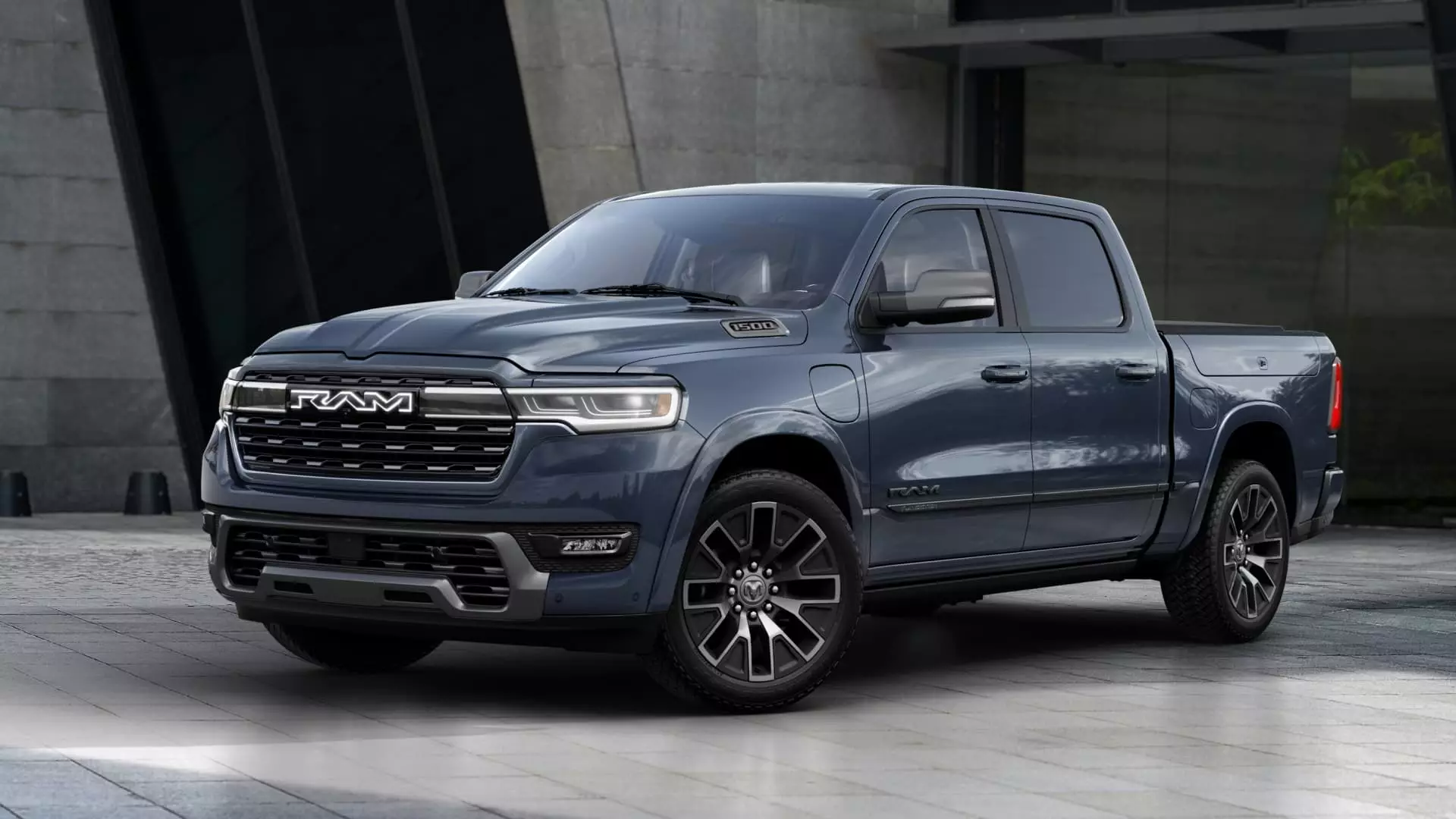Stellantis has recently announced the postponement of its all-electric Ram pickup truck, pushing its debut back from 2025 to 2026. This decision surfaces amidst a backdrop of slower-than-anticipated electric vehicle (EV) adoption among consumers and challenges faced by many competitors in making electric trucks profitable. The company’s pivot towards a hybrid model, known as the Ramcharger, reflects a calculated response to market demand and highlights the shifting landscape of the automotive industry.
The Ramcharger will incorporate both electric and internal combustion engine technologies, offering consumers an electric range-extended vehicle (EREV). This is designed to assure buyers that they can get the benefits of EV technology without sacrificing the traditional power offered by a gas engine. By embracing the Ramcharger first, Stellantis aims to cater to overwhelming consumer interest in a vehicle that balances efficiency and performance, which the full battery-electric version may not yet be able to deliver.
The recent news aligns with significant changes within Stellantis itself, including a leadership shake-up that saw the recent return of Ram CEO Tim Kuniskis. This transition in leadership comes on the heels of the departure of Carlos Tavares and is crucial in shaping the future direction of the Ram brand. Kuniskis has expressed the urgency for revitalizing the brand, especially after a discouraging 24% drop in sales reported through the third quarter of the year.
Kuniskis attributes this sales downturn not only to the slower rollout of the redesigned Ram 1500 model but also to delays in the heavy-duty truck segment. His remarks about “calling audibles” suggest a period of adaptability within the brand as it faces both internal challenges and external pressures from the broader market. These comments resonate with a growing sense of urgency for automakers to innovate rapidly to keep up with shifting consumer preferences.
As consumer preferences evolve, the challenge of appealing to truck buyers while integrating electric technology becomes increasingly apparent. Ram’s introduction of the Ramcharger as an EREV with an extended range of up to 690 miles demonstrates the brand’s commitment to providing versatility. This model can function as a full electric vehicle until its battery depletes, after which a gas-powered generator will maintain vehicle operation. This strategy is likely intended to alleviate range anxiety—one of the foremost concerns regarding electric vehicle adoption.
In pivoting towards vehicles like the Ramcharger, Stellantis not only addresses current market pressures but potentially sets a precedent in the industry for hybrid models as a transitional phase toward a more electric-focused automotive future. While many automakers remain firmly rooted in their electrification plans, Stellantis’s strategy reflects a nuanced understanding of the present climate and consumer desire for practicality alongside innovation.
The decision to delay the all-electric Ram pickup may initially seem like a setback; however, it could represent a strategic pivot toward a more sustainable and consumer-responsive business model. By balancing traditional gasoline capabilities with emerging electric technologies, Stellantis is positioning itself to navigate the complexities of the evolving automotive landscape.


Leave a Reply